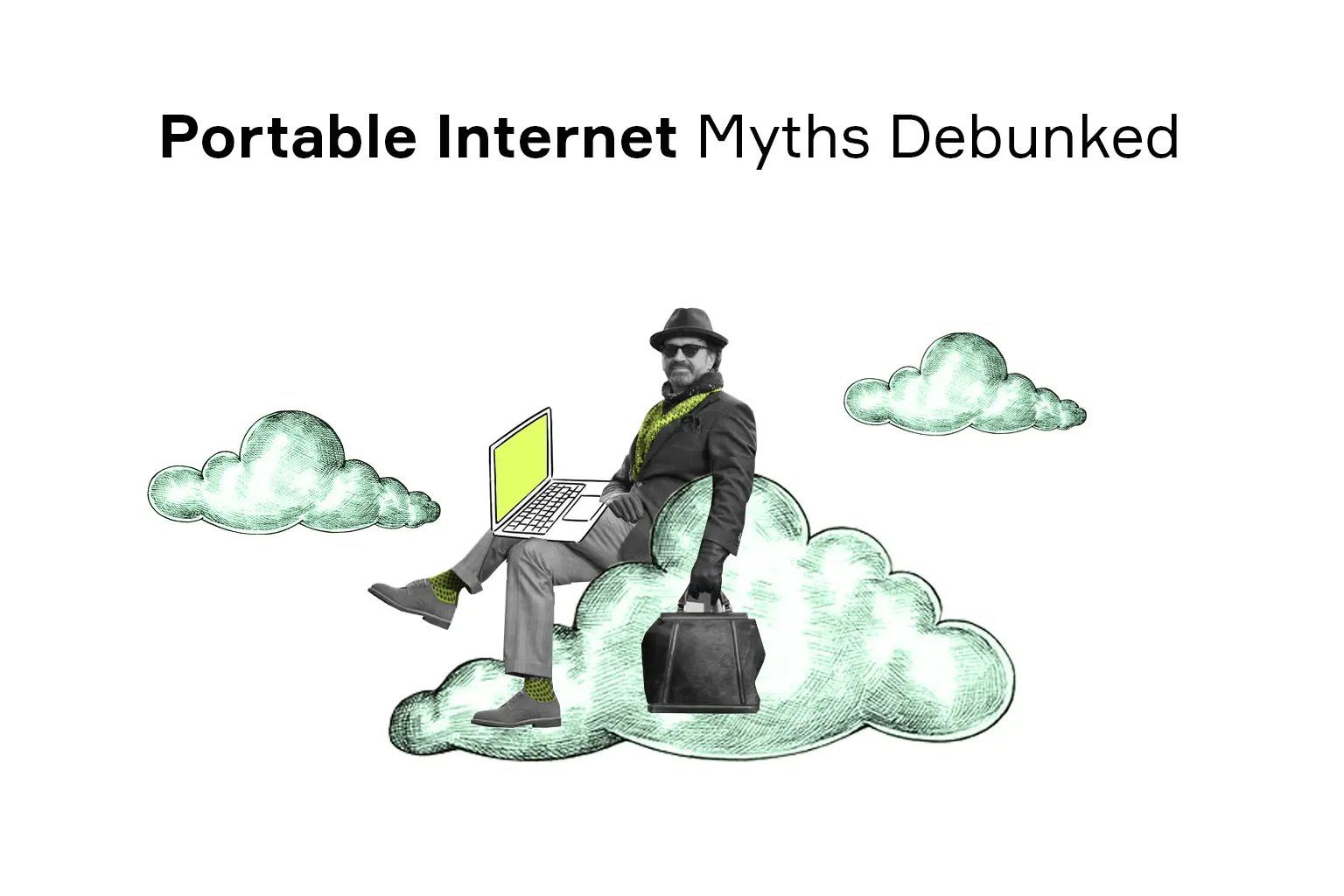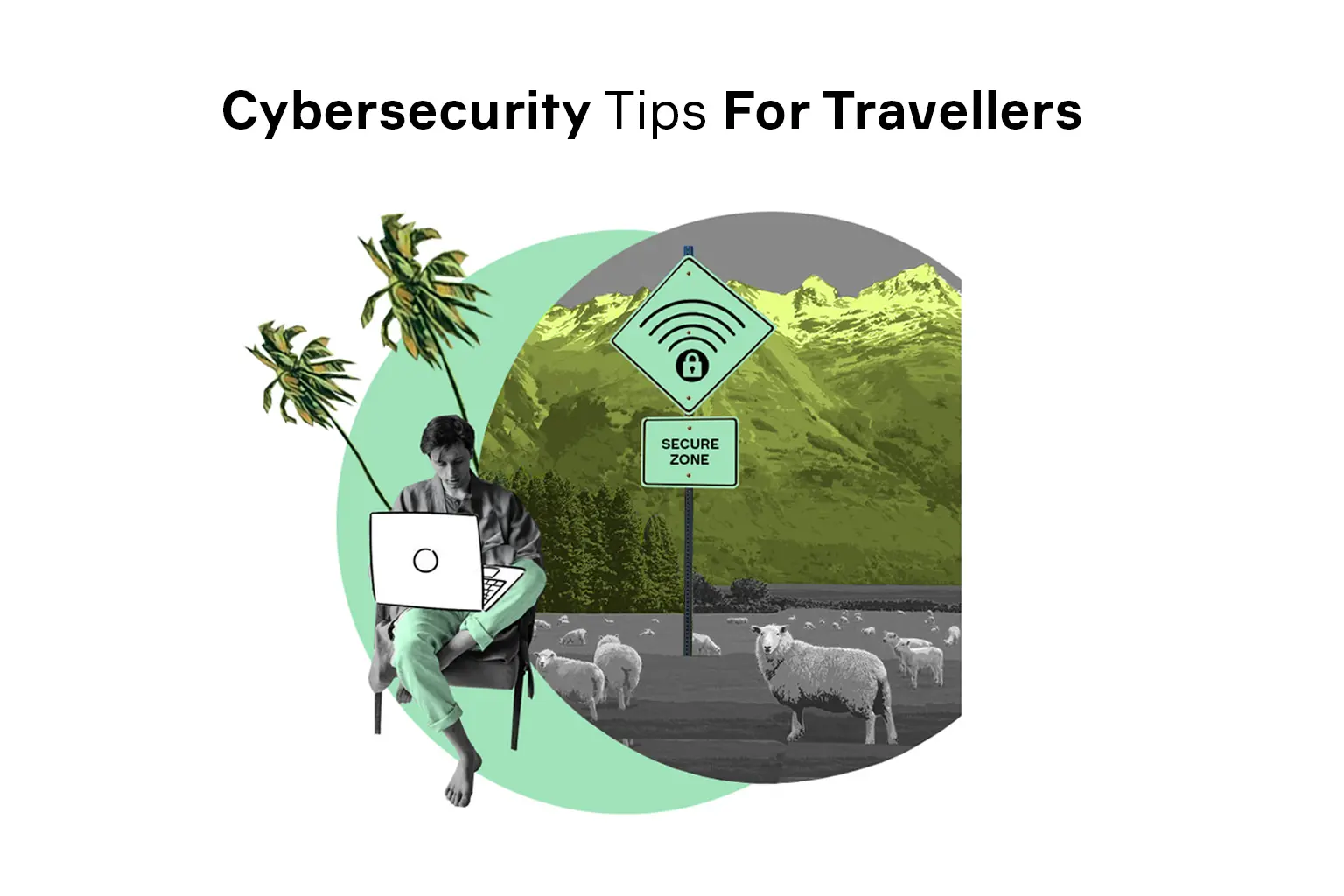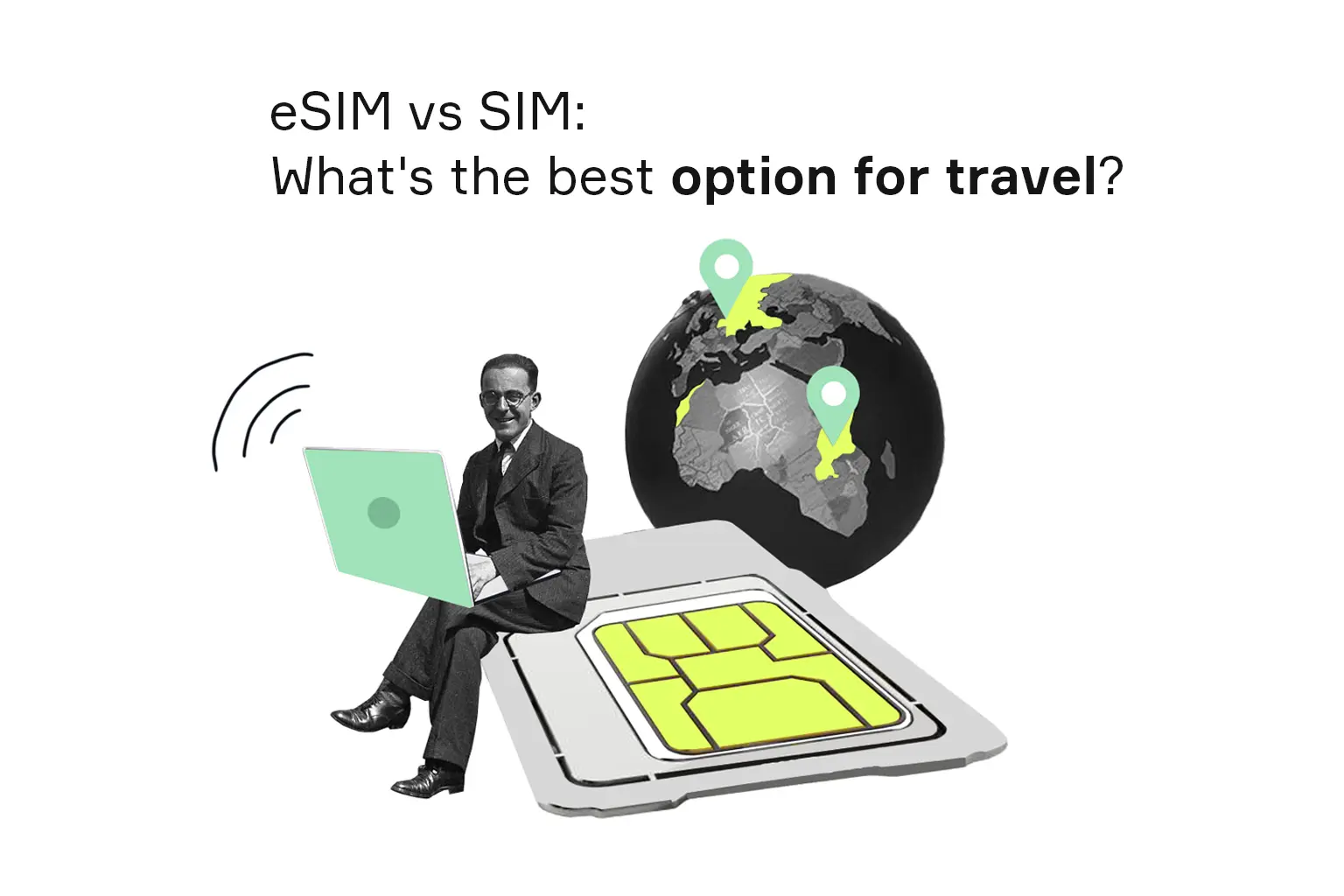
With the world plunging into the digital era, Internet connection has become a part and parcel for all types of users, be it business folks, travel bloggers, or road warriors.
Now another question posits: how to be connected everywhere? Cables are ties of the past already. It’s time to cut the cord to get a secure and portable Internet without cables or phone lines.
Here are a few options to stay connected on the go.
- Mobile hotspot is a great part of some smartphone features that help connect to the Internet through both tethered and untethered connections. When you activate the mobile hotspot feature on a smartphone, it shares the wireless network connectivity with other devices around, allowing them to access the Internet.
- Fiber Internet is a broadband connection with low lag time that uses fiber-optic cable transmitting data at a speed of up to 940 Mbps. This option is perfect to connect multiple devices.
- Cable Internet (excluding cable TV) is a high-speed connection that uses a cable modem to provide Internet access to end users. It is fast and affordable, capable of reaching gigabit speeds, but still it cannot excel the top upload speeds of fiber Internet.
- DSL provides Internet access via existing telephone lines that makes it available and cost-effective, but the connection is distance-sensitive. When you move away, the signal weakens and the speed decreases.
- Satellite Internet is nowhere near even DSL and cable Internet that come at a lower cost with higher speeds. Not to mention weather dependency, poor latency and bandwidth limitations. Still it can handle high bandwidth usage, so the connection quality will not be affected by peak use times.
- Free public Wi-Fi is one of the most common options to connect but it comes at a cost. Is Starbucks Wi-Fi secure indeed? A research by One World Identity revealed that 81% of Internet users keep connecting to public Wi-Fi despite security threats. There are many reasons why you should stay away from free Wi-Fi spots. Not only are they dangerous to your data, but cyber criminals can easily get unauthorized access to your devices.
- Portable Wi-Fi hotspot accessed by a cell phone carrier is referred to as a wireless Wi-Fi hotspot. Basically, it is a small hand held unit that transmits high-speed wireless signals, allowing connection from multiple devices in order to access the Internet.
Portable Internet On The Go: Importance and Advantages
The desire of a modern person to stay online 24/7 stimulated the development of connectivity options while on the go. But what is the purpose of a modem in this case? Portable Internet has several benefits that considerably improve the daily life of people in the information society.
- Ability to connect multiple devices. Depending on the type of pocket Wi-Fi, you may connect up to 10 devices at the same time. Portable modems are compatible with almost all types of modern laptops, smartphones, tablets, etc.
- Autonomy. Portable Internet gives its users the power of independence. Wi-Fi devices can work without electricity without the risk of running low. Now you are not confined to the free Wi-Fi network in your favorite coffee shop to write a tweet or check your email box.
- Convenience. Usually, portable Wi-Fi devices are light-weight and compact in size to fit every pocket. This solution can help to stay connected in places with limited access to the Internet, even in the absence of electricity network.
- Cost-effectiveness. A portable Wi-Fi is often prepaid. Initially, you choose a suitable data plan, and your device is ready to use after activation. No extra charges will catch you by surprise. Besides, this is another way to avoid exorbitant roaming charges while abroad.
- Secure connection. Some portable Wi-Fi devices, such as nect MODEM, protect you from data breaches and risks that are possible when you enter passwords and banking information over an unknown network. They usually have WPA encryption, an in-built firewall and even VPN to increase security when accessing the Internet.
Read more: Wired Internet Connection VS Wireless: Getting Things Right
However, there are a few myths spread among Internet users that may discourage the use of pocket Wi-Fi. Are they real indeed?
Let’s take a closer look.
Myth #1. Portable Internet is costly and contract-binding
As pocket Wi-Fi is a relatively new invention, many people may think that it’s quite expensive and binding to a service provider. Most users choose portable Internet for international travel, where you purchase a certain amount of data or validity period in advance. Though more affordable than roaming in general, the cost can still escalate for longer journeys.
No-contract Internet plans
Still you can free yourself from any commitment. Though most ISPs offer prepaid Internet plans, there are other ways to use a portable Wi-Fi device. One of the options is going unlocked. Now many providers like Verizon offer no-contract Internet plans where users have the freedom to choose the suitable speed with no surprises, extra fees, or being locked into annual contracts. Not to mention the freedom from early termination fees. Otherwise, there are separate devices where you simply need a SIM card or use eSIM to access the Internet like a portable wireless modem.
For digital nomads, this option is a great catch as it spares you both the expenses that could be necessary for a travel/local SIM and your nerves while chasing public Wi-Fi hotspots or dealing with spotty connection.
Myth #2. Smartphone hotspot can fully replace a portable Internet device
When the mobile hotspot is enabled, a smartphone acts as a Wi-Fi access point for a number of devices. The main difference with the pocket Wi-Fi is that you don’t need a separate device to access the Internet.
On the other hand, mobile hotspot is an ad hoc access point that can be run directly from the smartphone. So if the mobile hotspot can work almost the same as a portable Wi-Fi device, do you really need a portable hotspot for Internet use?
How does a portable WiFi hotspot work?
A separate device means a separate battery. Not to sacrifice your smartphone in its daily usage, you may opt for the pocket Wi-Fi solution. Dedicated hotspots will be powerful enough to run all day long. Further, if you need to connect a few devices, a portable Internet will be the best choice. And you may forget about the discomfort and hassle of swapping SIM cards; now the whole process of connecting is much easier. Finally, let’s not miss out on security issues. Since most portable Wi-Fi devices have an adequate level of protection due to encryption and firewall so that you won’t be able to connect without inputting the necessary details.
How does a cellphone hotspot work?
First of all, a cellphone hotspot is more affordable as you don’t need to buy an additional device. The mobile data of the existing prepaid plan is the primary source of Internet connection.
One little remark here: you should clearly monitor data usage though a data monitoring application as additional charges can be incurred if mobile tethering is not permitted by ISPs. Mind that unpaid tethering can even make you a thief. As a backup solution for occasional use, you don’t need to go beyond the limits offered by your smartphone hotspot. But reliable Internet access requires dedicated connectivity that can be better ensured by a separate portable Wi-Fi device.
Myth #3. The speed of portable Internet is much lower than wired connection
There is an element of truth in this statement. It may be right unless your pocket Wi-Fi is acting as a hotspot, but if a portable Internet device like nect MODEM is connected to the laptop or any other gadget via USB cable, better data transfer and lower ping are ensured. Yet, Internet speed is a crucial factor in the choice of your portable wireless modem. In the best case scenario, your portable device will connect to 4G and 5G networks supporting data transfer rates of up to 300 Mbps.
How to speed up modem Internet connection?
Despite the limitations of your modem’s capabilities or ISP’s speed caps, proper management of certain settings and basic maintenance rules will allow the modem to run smoothly and effectively. Make sure the firmware is always up-to-date, restart the modem regularly, position it on a high stable surface without any obstacles that interfere with the signal and fix the channel setting to choose the most appropriate one.
Is Portable Internet Worth It?
The answer is definitely YES, no matter what the myths say. Portable internet is the most optimal solution for users on the go. Whether you’re in Las Vegas enjoying the bachelor’s party or defending a thesis about La Seine Musicale architecture in Paris, you need to carefully select the right portable Wi-Fi device for your needs. Countries like Japan even use wireless Internet for home networks! If you want to up your game regarding good Wi-Fi signal, strength and speed, it’s high time to purchase a portable wireless modem to ensure the best user experience.
With 5G on the horizon, Wi-Fi devices supporting download speeds of up to 10 Gbps have become a reality due to the rapid development of technology. The only restricting factors may be spotty connection and data cap limitations imposed by providers.
Now that you know how the portable Internet works, it’s time to stay faultlessly connected. With nect MODEM, let us show you what real freedom feels like.
All illustrations are created by Olga Zherebetska.





